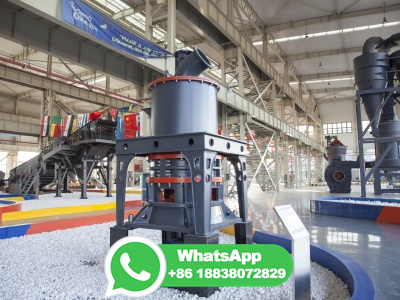
In other words, a % pure gold could be easily precipitated out from the acetic acid leach solution by adding a basic solution of these two organic reductants. Washing the resulting gold precipitate with 2M H 2SO 4solution (containing 10% v/v H 2O 2) could increase the purity of final gold product up to %.
WhatsApp: +86 18037808511
· While leaching gold, they will "compete" with gold for cyanide and oxygen, thus hindering the dissolution of gold and reducing the cyanidation efficiency. Solution For this kind of gold ore, different methods should be adopted according to the content of copper and zinc.
WhatsApp: +86 18037808511
Leaching Behavior of Gold in Iodide Solutions Gold dissolution can be achieved with a number of complexing ligands, all with varying degrees of stability. Processes based on the use of halogens have been known for many years.
WhatsApp: +86 18037808511
· Heap leaching is one of the oldest and the most traditional mining process used to extract valuable metals from specific minerals. This is a hydrometallurgical process in which the solution is applied for the dissolution of minerals from the ore that is used for the extraction of metals. Originally, heap leaching was practised 500 years ago.
WhatsApp: +86 18037808511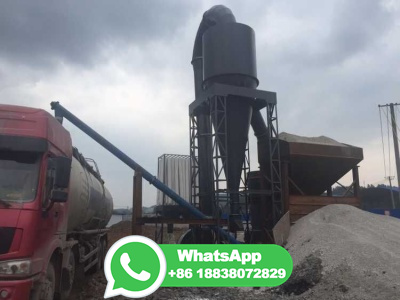
· The process flow of the allslime cyanidation gold extraction method can be divided into six stages: crushing and screening, grindinggravity separation, secondary classifiion, dedusting and pulping, cyanidation leaching and desorption electrolysis. The specific process flow is as following: 1. Gold ore crushing and screening process
WhatsApp: +86 18037808511
· Leaching and CIL processes in gold recovery from refractory ore with thiourea solutions. Minerals Engineering, 20 ( 6 ), 559 – 565 . CrossRef Google Scholar
WhatsApp: +86 18037808511
· Gold Cyanide Solution (Leaching Gold With Cyanide) Since the 1890's, cyanide has been used to recover gold from gold bearing or And today, over 115 years .... Gold Cyanidation GroundTruth Trekking. Through a process called "gold cyanidation",, Heap leaching extracts less of the gold than processing, Solutions containing cyanide have to be .
WhatsApp: +86 18037808511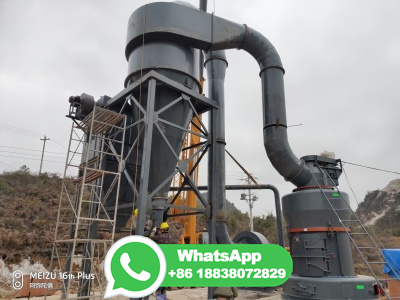
· Heap leaching is a hydrometallurgical technique with lower operational costs than more conventional processing technologies. The technique offers gold producers a userfriendly extractive solution...
WhatsApp: +86 18037808511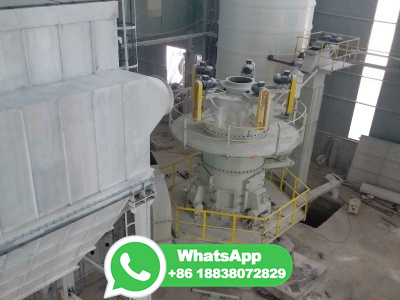
Gold and silver leaching in thiosulfate solution is preferable kinetically and environmentally if conducted in a closed vessel effect silver alloyed with gold was evaluated and the result showed that the dissolution rate of pure gold is higher than that form 4 and 8 wt% Ag alloys.
WhatsApp: +86 18037808511
· Hydrogen peroxide is introduced in the following order: 1st cycle — creating an alkaline medium for saturating the pore space of the ore pile with alkalineperoxide solution; 2nd cycle — additional strengthening of peroxide and supplying solution to the pile; 3rd cycle — supplying cyanide solution for gold leaching.
WhatsApp: +86 18037808511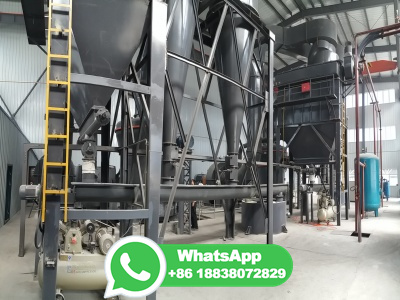
· The flow of the pulp and water is in opposite directions. As a result, the pulp becomes progressively lower in soluble gold content as it passes the discharge. Conversely, the water added in the...
WhatsApp: +86 18037808511
leaching chemistry of gold gold is very insoluble in aqueous systems only dissolves in oxidising solutions containing complexing ligands: cyanide halides thiourea thiocyanate this allows impurities to be eliminated during leaching cyanide is universally used for gold leaching because of its; relatively low cost great effectiveness for .
WhatsApp: +86 18037808511
In alkaline glycine–hydrogen peroxide solutions, it has been found that gold leach rate from gold–silver (50% Ag) alloy is about 6 times higher than rate from pure gold and the silver leach rate was μmol/m2 s. An induction period of 48 h was noted for rolled precious metal foils, after which leaching rapidly accelerated.
WhatsApp: +86 18037808511
The concept of leaching copper–gold ores using leach solutions which contain Cu(CN) 3 2 was investigated. Gold leaching occurs in air saturated Cu(CN) 3 2 solutions at a much slower rate than in free cyanide solutions. A similar gold leach rate is observed when copper is alloyed with the gold. The dissolution of several common copper minerals ...
WhatsApp: +86 18037808511
· It is known that gold can be efficiently leached from gold bearing ores using a mixture of hydrochloric acid, ferric chloride, and manganese The chemical reaction involved during the...
WhatsApp: +86 18037808511
· Cyanide leaching in the gold extraction process The two steps of slurry and activated carbon adsorption are one step, which reduces the loss while reducing management costs. Compared with the traditional CCD process, it saves 66% of the investment cost. It is the main process of modern gold ore dressing.
WhatsApp: +86 18037808511
· Gold heap leaching process mainly consists of heap leaching site construction, ore pretreatment (crushing or granulation), pile building, spray leaching, gold recovery from goldbearing pregnant liquid, disinfection and unloading of waste ore piles, etc. Jump To A Section: 1. Granulation 2. Stacking 3. Spraying To Wrap Up
WhatsApp: +86 18037808511
CLS will leach pieces of gold 40 mesh and smaller within 8 to 12 hours. This is a definite advantage over cyanide which can take up to a week to leach 40 mesh gold. This presents a number of tradeoffs between CLS and cyanide. In most cases, the CLS leaching system can be built much smaller than the cyanide system.
WhatsApp: +86 18037808511
The invention relates to a solution for leaching precious metals contained in a mineral, as well as the use thereof and the leaching process in which said solution is applied. The solution for leaching precious metals comprises NaCl, a nontoxic source of cyanide that can perform both the oxidation and the complexing of the metals, and at least one base for providing the alkaline .
WhatsApp: +86 18037808511
First, initial glycine leaching experiments (E1–E7) were run to observe the effects of glycine concentration (–2 M), pH (10–12), and temperature (22–60 °C) on the amount of gold dissolved into solution (mg/L). Table 3 summarizes the parameters used in .
WhatsApp: +86 18037808511
a process for leaching gold and silver from noble metal containing material; namely, ores or ore concentrates comprising leaching said material with an aqueous cyanide leaching solution having a ph of from 8 to 13 and adding during leaching a diluted aqueous h 2 o 2 solution containing from to 5% by weight h 2 o 2 to said leaching solution, .
WhatsApp: +86 18037808511
One example of a leaching process that uses vat leaching is gold cyanidation, the process of extracting gold from lowgrade ores. In this process, a dilute solution of sodium cyanide (NaCN) is used to leach the Au into solution. The concentration is .
WhatsApp: +86 18037808511
The gold dissolution from leaching a pure gold disc ( cm2) after 2 h, for each step, is shown in Fig. 2. It can be seen that increasing the pH of cuprous cyanide solutions (step 2) enhances the dissolution of gold using Cu(CN) 2 −solutions at a rate two times higher than at pH
WhatsApp: +86 18037808511
The chemical reaction of this leaching process is given as follows. A l 2 O 3. 2 H 2 O + 2 N a O H → 2 N a A l O 2 = 3 H 2 O Another example of the process of leaching is leaching of the noble metals like silver and gold in the presence of the dilute aqueous solutions of either potassium cyanide or sodium cyanide in the presence of air.
WhatsApp: +86 18037808511
Insitu leaching is also called "solution mining." This process initially involves drilling of holes into the ore deposit. Explosives or hydraulic fracturing are used to create open pathways within the deposit for solution to penetrate into. Leaching solution is pumped into the deposit where it makes contact with the ore.
WhatsApp: +86 18037808511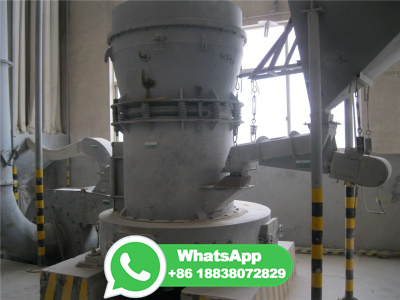
In a method for leaching gold from copper sulfides, the sulfide ores are first subjected to leaching of copper, thereby producing a leaching residue having % or less of the copper content. This leaching residue is mixed with a leach liquor, which contains the chloride ion and ferric ion and has or less of pH. Gold and copper can be effectively leached from the .
WhatsApp: +86 18037808511
Several decades ago, only about 3% of copper and gold supplies were produced through heap leaching. Today, the volume is surpassing 30% annually. Valuable chalcopyrite copper, previously not considered economical in heap leach development, is now heap leached, as is nickel laterite, uranium, and even rare earths.
WhatsApp: +86 18037808511
· Cyanide has been the most commonly used method for gold processing globally because of its unmatched economics and effectiveness in gold leaching and is – if controlled and monitored efficiently – safe. What can gold mining companies do better in terms of reducing environmental footprint and social risks associated with cyanidation?
WhatsApp: +86 18037808511